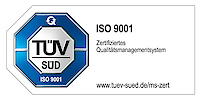AG Schoch
Chemical synapses are specialized sites of information exchange between neurons and their target cells. At the synapse the arriving electrical signal is rapidly and efficiently transformed into a chemical signal through regulated exocytosis of neurotransmitter-filled synaptic vesicles. Structurally synapses are characterized by their asymmetric organization with a presynaptic nerve terminal (bouton) that contains synaptic vesicles, a synaptic cleft, and a postsynaptic neurotransmitter reception apparatus, the postsynaptic density (PSD). The fusion of synaptic vesicles with the presynaptic plasma membrane is under tight temporal and spatial control as synaptic vesicles only dock, fuse and release neurotransmitter at a restricted and highly specialized area of the presynaptic plasma membrane called the active zone. The active zone is tightly associated with an electron-dense cytoskeletal matrix, wich is referred to as cytomatrix at the active zone (CAZ) or presynaptic grid. The protein network that constitutes the CAZ is integrally involved in the organization of docking and priming of synaptic vesicles. In addition, the CAZ might underlie the long-term stability of individual synaptic sites but at the same time mediate use-dependent changes in release during short-and long-term synaptic plasticity. Alterations in synaptic properties and numbers have been suggested to constitute a fundamental mechanism for modifying functional properties of neuronal networks and thereby contributing to phenomena like learning and memory. On the other hand, numerous studies published in recent years have linked synaptic dysfunction and particular components of the presynaptic release machinery to pathophysiological conditions, e.g. epilepsy or other psychiatric and neurological diseases.
Research
Our research focus are the molecular mechanisms underlying the structural organization of the presynaptic active zone and the molecular alterations involved in physiological and pathophysiological synaptic plasticity. In particular, we are interested in the following questions:
- What are the fundamental mechanisms underlying the formation and maintenance of the active zone ultrastructure?
- How does the CAZ contribute to mediating synaptic tenacity and synaptic stability?
- What are the effects of physiological and pathophysiological activity on the composition and structure of the active zone?
- Which signal transduction cascades mediate changes in the presynaptic release machinery in response to physiological and pathophysiological activity?
- Role of the presynaptic release machinery during epileptogenesis.
Acknowledgement
DFG, BMBF, BONFOR


















